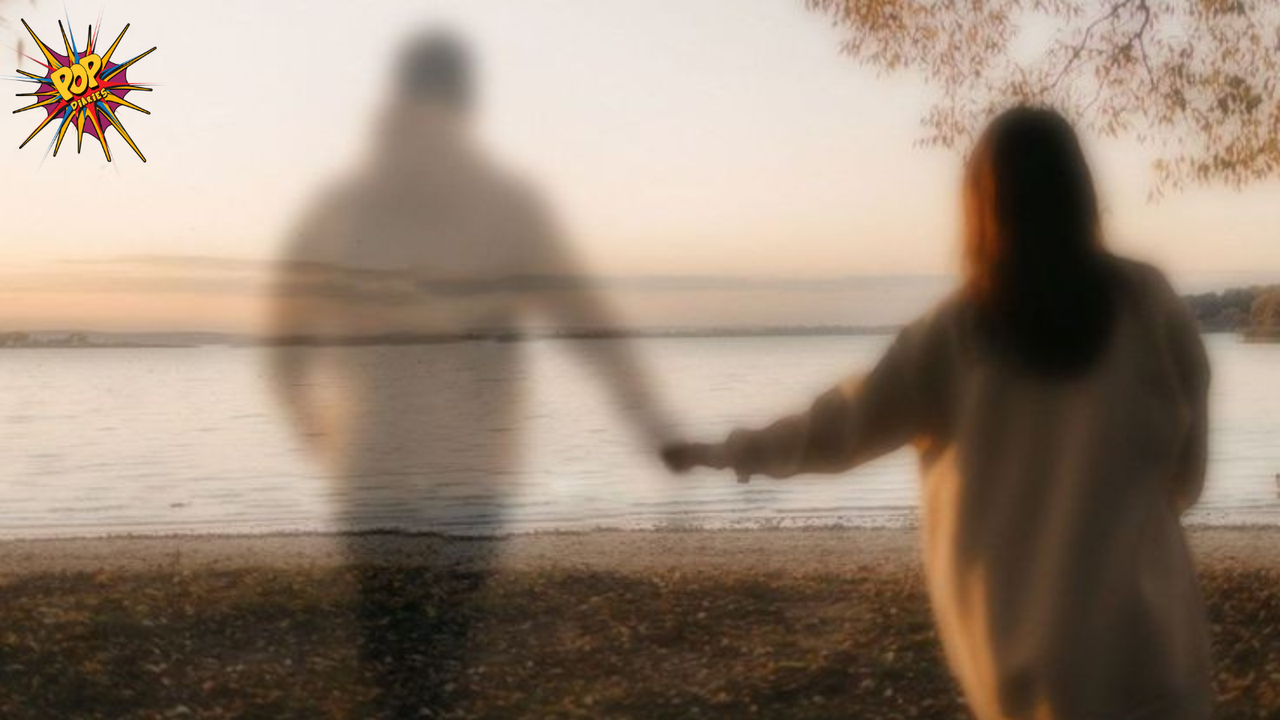By Katelyn Walls Shelton In 2018, 1,200 Yale undergraduates crowded into one of the University’s largest venues, Battell Chapel, ready to...
Vous n'êtes pas connecté
- English
- Français
- عربي
- Español
- Deutsch
- Português
- русский язык
- Català
- Italiano
- Nederlands, Vlaams
- Norsk
- فارسی
- বাংলা
- اردو
- Azərbaycan dili
- Bahasa Indonesia
- Հայերեն
- Ελληνικά
- Bosanski jezik
- українська мова
- Íslenska
- Türkmen, Түркмен
- Türkçe
- Shqip
- Eesti keel
- magyar
- Қазақ тілі
- Kalaallisut ; kalaallit oqaasii
- Lietuvių kalba
- Latviešu valoda
- македонски јазик
- Монгол
- Bahasa Melayu ; بهاس ملايو
- ဗမာစာ
- Slovenščina
- тоҷикӣ ; toğikī ; تاجیکی
- ไทย
- O'zbek ; Ўзбек ; أۇزبېك
- Tiếng Việt
- ភាសាខ្មែរ
- རྫོང་ཁ
- Soomaaliga ; af Soomaali
Rubriques :
 Maroc - EURASIAREVIEW.COM - A la une - 17/Sep 23:39
Maroc - EURASIAREVIEW.COM - A la une - 17/Sep 23:39
Break Out Of Bad Therapy: Gen Z’s Road To Resilience – OpEd
By Katelyn Walls Shelton In 2018, 1,200 Yale undergraduates crowded into one of the University’s largest venues, Battell Chapel, ready to listen and learn. But the students sitting in the glow of the chapel’s stained-glass windows, who comprised almost a quarter of Yale’s undergraduate population, were not there for a church service. They were there for the most popular class in Yale’s 316-year history: Psychology and the Good Life – or, as it was more colloquially known, “the happiness class.” Undergraduates attending Yale that year would have been born between 1996 and 2000, among the first Generation Z students to darken the doors of an Ivy League university older than the United States itself. By 2018, according toProfessor Laurie Santos, those students faced a “mental health crisis” at Yale andon campusesacross the United States. To combat it, Santos created the course advocating for positive psychology and behavioral change. And clearly, there was an appetite for it. According to Abigail Shrier, who herself spent time as a student at Yale (and Columbia and Oxford, a veritable bouquet of prestigious universities), Generation Z is “the loneliest, most anxious, depressed, pessimistic, helpless, and fearful generation on record.” And she’s not the only one to say so. Jonathan Haidt, Jean Twenge, and others studying Generation Z have said much the same. But Shrier’s new book,Bad Therapy: Why The Kids Aren’t Growing Up, proffers a different theory than the others (one much less focused on the impact of the smartphone and social media): that happiness-centered parenting and copious amounts of therapy have rendered Gen Z the most dysfunctional generation on record. Shrier would likely consider the 1,200 Yale students looking for happiness in a psychology class exhibit A (or Z, if you will). For Shrier, “bad therapy” hinges uponiatrogenesis, the idea that a treatment intended to cure could be inflicting harm. As she notes at the outset, some people (children included) have legitimate mental health disorders and need professional help. But others — who more often are the focus of discussions surrounding the “youth mental health crisis” — are merely “worrie[d], fearful, lonely, lost, and sad.” In other words, they are unhappy young people, and they’re looking to mental health professionals to help them find happiness or “diagnose” why they can’t. Shrier interviews one expert who observes, “happiness is actually a very rare emotion, statistically speaking”; the more you hunt for it, “the more likely you are to be disappointed.” It’s also difficult to achieve when focusing on yourself. And yet that’s precisely what therapy has you do. “Attending to our feelings often causes them to intensify” — if you are not already happy, focusing on your unhappiness is an unlikely path to becoming so. The meat of Shrier’s argument rests upon the claim that such iatrogenic therapy has become commonplace in schools and parenting manuals across the United States. What once was a school counselor or two is now an expanded team of psychology staff that inculcates “trauma-informed education.” Two years ago, California “announced a plan to hire an additional ten thousand counselors to address young people’s poor mental health.” Mental health surveys, often written by the Centers for Disease Control and Prevention (CDC), according to Shrier, are designed merely to keep school psychologists in business, ask leading questions of students at the height of pubescent, hormonal impressionability: “During the past year, did you do something to purposely hurt yourself without wanting to die, such as cutting or burning yourself on purpose?”; “Have you ever participated in a game or challenge, by yourself or with others, that involved getting dizzy or passing out on purpose for the feeling it caused? (This game or challenge is also called the Choking Game, the Fainting Game, Pass Out, Knock Out, Tap Out, or Black Out.)”?; Have you ever tried to lose weight by “fasting or abusing laxatives?” This specificity, even thoughsuicideandself-harmare extremelycontagiousbehaviors that – when it comes to other forms ofreporting, such asjournalism– are subject to guidelines to minimize the possibility of copycat behavior. At home, Shrier paints a parallel picture. Parents have adopted “gentle parenting” strategies to keep their children emotionally attuned and happy, thinking they need “sophisticated knowledge of the human brain and its infinitely complex systems to discover what’s troubling [their] own kids.” Parents live in fear of unintentionally inflicting “childhood trauma” or “adverse childhood experiences” (ACEs) on their kids, which are said to negatively impact a child for life. But in attempting to avoid such experiences, Shrier says that parents swing too far in the other direction, effectively handicapping their kids. “Kids arrive at school having never heard the word ‘no’,” a recipe for disaster in a class with twenty other kindergarteners who have also never heard the word. Pair this withthe statisticthat “teachers were themost likelyto be the first to suggest an ADHD diagnosis in children,” and children are on atrajectoryforpsychotropic drugsand therapy from the time they enter kindergarten atage five. While the educational and parenting trends Shrier linked were eye-opening, perhaps the keenest insight Shrier makes is one she doesn’t spill much ink expounding: when it comes to raising and shaping our kids, moral language has been replaced by that of the therapeutic. But what happens when, as Jessica Grose writes for Slate, “childhood misbehavior is much more likely to be described in terms of therapeutic symptoms than character flaws”? When one’s inability to overcome his or her vices is reframed not as a moral failing, but as “mental illness”? When any whiff of negativity is labeled as “trauma,” and those who inflict it are “toxic,” to be shunned? Well, as Shrier writes: “agency [slinks] out the back door.” One question prompted by Shrier’s book is what happens to the moral formation of children whenreligionandreligious institutions, which have historically provided many of the benefits that therapy purports to achieve without some of its more obvious drawbacks, erode over time, as they have inrecent decadesin America. Shrier’s book displays some of the effects of this replacement in Generation Z, which is theleast religious generationrecorded in the United States. Therapy has become the secular replacement for religion in the public sphere, and the Diagnostic and Statistical Manual of Mental Disorders (DSM) is its sacred text. The philosopher Alasdair MacIntyre saw this coming decades ago. His seminal 1981 work,After Virtue, decried the ills of “emotivism,” or “the doctrine that all evaluative judgments and more specifically all moral judgments are nothing but expressions of preference, expressions of attitude or feeling.” He identifies that the Enlightenment West has no way of measuring rival theories of morality against one another. MacIntyre highlights three main characters on the cultural stage that embody “emotivist modes of manipulative behavior”: one of which just so happens to be “the therapist.” According to MacIntyre, therapists cannot engage in moral debate, but “purport to restrict themselves to the realms in which rational agreement is possible — that is, … to the realm of fact, the realm of means, the realm of measurable effectiveness.” But in a confused society, whichcannot coalesceupon what a “fact”even is, much less a common vision of the good (or a shared law reinforcing it), the primary character-shaping individuals in kids’ lives (parents and educators) struggle to decide upon which normative values to instill and pass on. Values that, in decades past, have always been supplied in America by amoral realism, that is, a combination of religion andvirtueslike honesty, courage, wisdom, and accountability, among others. America has, for the most part, combined the West’s biblical heritage andcommercial virtues, an approach that many of our founders understood well. Failure to do so leads in many directions, one of which is a least-common-denominator catch-all: therapy – a cheap, emotivist substitute for virtue and an objective sense of right and wrong. To recover what Shrier presents as lost inBad Therapy, we need not only a stronger sense of resilience, as Shrier proposes, but something more akin to moral realism as a remedy to our therapeutic age: a return to virtue, and the institutions that promote and spread it.This return would bolster a sense of community and belonging, spur character development alongside the teaching that there is much greater than oneself, give an account of human failing and promote responsibility when the failure is your own. This would shape young people to be better participants in the workforce, as they grapple with the challenges of building skills and careers in a dynamic environment. Instead of self-centered self-care, this approach promotes caring for one’s neighbor as oneself. Instead of chasing happiness and avoiding suffering, moral realism teaches the reality that, in an imperfect world, suffering is to be expected – but that what matters most is how one responds to it. Even the best individually tailored therapy and medication cannot do this. Despite the polarizing tone of her book, Shrier’s broader points are timely and much needed: that therapy doesn’t cure all our ills, and perhaps even makes them worse; that if everything is trauma then nothing is; that humans are resilient and have been for millennia; that we can continue to be so if we choose. “The happiness class” at Yale moved to the university’s concert venue, Woolsey Hall, to accommodate the great number of students interested in learning the psychology behind being happy. It’s almost as though the class represented a microcosm of Western society, a symbol of the therapeutic approach superseding moral realism in the public square. Shrier uncovers the pathos of the therapeutic, but the next step for young people is to understand and believe that their freedom and virtue are gifts, with which to live a life of excellence. About the author: Katelyn Walls Shelton is the former Special Assistant for Global Women’s Health at the US Department of Health and Human Services. She is now a Paul Ramsey Bioethics Fellow and Opinion Contributor to WORLD Magazine, focusing her writing on women’s health and beginning of life issues. Katelyn studied law and religion at Yale University, earning her MAR in Ethics from Yale Divinity School. She lives in Washington, DC with her husband, John, and their children. Source: This article was published at AIER
Articles similaires
Trick or Treating Baskets for the Spooky Season
My kids are getting older and phasing out of trick or treating, which is a little sad. But that doesn’t mean I can’t look around and help others...
Trick or Treating Baskets for the Spooky Season
My kids are getting older and phasing out of trick or treating, which is a little sad. But that doesn’t mean I can’t look around and help others...
Time And Consciousness: From Metaphysics To Psychology – Analysis
Philosophy begins as thought comes to recognize the peculiar relation in which it stands to time - one through which man fundamentally distinguishes...
What Is Breadcrumbing? Essential Insights You Need
Breadcrumbing is a term used to describe a manipulative behavior in romantic or social interactions where one person leads another on with small,...
7 Effective Ways to Combat Anxiety Attacks
Anxiety attacks can strike at any time, leaving you feeling overwhelmed and out of control. Understanding how to manage these episodes effectively is...
7 Effective Ways to Combat Anxiety Attacks
Anxiety attacks can strike at any time, leaving you feeling overwhelmed and out of control. Understanding how to manage these episodes effectively is...
The Amish: A Control Group For Technofeudalism – OpEd
Life in the United States has changed drastically in the last several decades. Technology, pharmaceutical and medical interventions, dietary shifts,...
Post-Roe health provider survey finds abortion bans create bad outcomes and distress
In the two years since the U.S. Supreme Court started allowing states — what has become almost half of the country — to ban all or most abortions,...
War On Children: Gaza Kids Are Unvaccinated, Hungry And Orphaned – OpEd
The Israeli war on Gaza hasbecomea war on Palestinian children. This was as true on October 7 as it is today. On August 17, UN Secretary-General...
Les derniers communiqués
-
Adobe Brings Conversational AI to Trillions of PDFs with the New AI Assistant in Reader and Acrobat
Adobe - 21/02/2024
-
Laura Frigenti takes the Helm as Chief Executive Officer of the Global Partnership for Education
Global Partnership for Education - 05/12/2022



